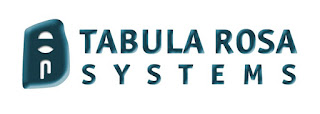www.amazon.com/author/paulbabicki
====================================================
The following is an excerpt from
my book, "Netiquette IQ . . ." (see details below),
+++++++++++++++++++++++++++++++++++
Forwarding invitations
Considerable
care and thought should always be given to forwarding invitations. Core
etiquette and Netiquette principles maintain almost
sacrosanct adherence to avoid misusing the privacy of communications. If a
situation is presented where an invitee wishes to add someone to a private
meeting, social event, or other gathering, there are a number of steps that should
be taken:
1. Seek permission of
the inviter (original sender).
2. Determine who
should be on the distribution list.
3. Copy the original invitee.
4. Remove unnecessary
threads, but keep confidentiality clauses and disclaimers.
5. Identify that this
is a forwarded document.
6. Ask the recipient
not to forward the document, or attach a legal notice, if necessary.
7. Never assume a
sender will approve of forwarding correspondence.
8. Do not forward
documents if under nondisclosure or confidentiality agreements,
9. Never add
controversial, discriminatory, or derogatory comments to the basic text.
10. Explain briefly and
clearly to the recipient why the invitation is being forwarded. One should be
mindful that some people will be offended because they were not original
invitees.
11. One may be
selective in showing a full list of invitees, depending on any number of
reasons, including size of the list, possible effect on attendance, specific
instructions, or any number of other reasons.
================================== Good Netiquette And A Green Internet To All! =====================================================================
Tabula Rosa Systems - Tabula Rosa Systems (TRS) is dedicated to providing Best of Breed Technology and Best of Class Professional Services to our Clients. We have a portfolio of products which we have selected for their capabilities, viability and value. TRS provides product, design, implementation and support services on all products that we represent. Additionally, TRS provides expertise in Network Analysis, eBusiness Application Profiling, ePolicy and eBusiness Troubleshooting.
We can be contacted at:
===============================================================In addition to this blog, Netiquette IQ has a website with great assets which are being added to on a regular basis. I have authored the premiere book on Netiquette, “Netiquette IQ - A Comprehensive Guide to Improve, Enhance and Add Power to Your Email". My new book, “You’re Hired! Super Charge Your Email Skills in 60 Minutes. . . And Get That Job!” has just been published and will be followed by a trilogy of books on Netiquette for young people. You can view my profile, reviews of the book and content excerpts at:
www.amazon.com/author/paulbabicki
Anyone who would like to review the book and have it posted on my blog or website, please contact me paul@netiquetteiq.com.
In addition to this blog, I maintain a radio show on BlogtalkRadio and an online newsletter via paper.li.I have established Netiquette discussion groups with Linkedin and Yahoo. I am also a member of the International Business Etiquette and Protocol Group and Minding Manners among others. I regularly consult for the Gerson Lehrman Group, a worldwide network of subject matter experts and I have been contributing to the blogs Everything Email and emailmonday . My work has appeared in numerous publications and I have presented to groups such as The Breakfast Club of NJ and PSG of Mercer County, NJ.
Additionally, I am the president of Tabula Rosa Systems,
a “best of breed” reseller of products for communications, email,
network management software, security products and professional
services. Also, I am the president of Netiquette IQ. We are currently developing an email IQ rating system, Netiquette IQ, which promotes the fundamentals outlined in my book.
Over the past twenty-five years, I have enjoyed a dynamic and successful career and have attained an extensive background in IT and electronic communications by selling and marketing within the information technology market.


.jpg)





